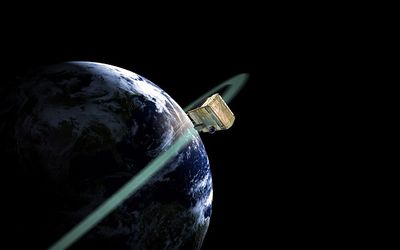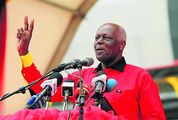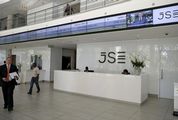Source:

Tiny satellites give investors a bird’s eye view, but is it worth the trouble?
by Bradley Hope
2016-08-15 12:48:43.0
THE latest technological innovation for data-hungry hedge funds is a fleet of five dozen shoebox-sized satellites.
A company called Planet Labs has launched a small constellation of what it calls "cubesats" that can deliver much more frequent imagery of economically sensitive spots than traditional satellites. Those spots include retailers’ parking lots, oil-storage tanks or farmland.
The company, founded by three former Nasa scientists, has now signed an agreement to supply data to Orbital Insight, which mines satellite imagery for trading tips for hedge funds.
Until now, Orbital has relied on monthly or bimonthly imagery for its analysis. The deal with Planet Labs will give it access to weekly images at first. Next year, if Planet Labs succeeds in a plan to launch another 40 or so cubesats, Orbital will have access to daily images of every piece of land on earth.
"Almost all economic activity is change," says Jimi Crawford, a former Google executive who founded Orbital. "Once you get down to daily images, tremendous new horizons open up to being able to monitor and track that change."
Orbital counts several large hedge funds and other investment firms as clients. It declines to name them.
It has offered clients "signals" — predictions on how prices will move for certain stocks — based on its automated analysis of satellite imagery since 2014.
This analysis includes revenue predictions for big-box retailers such as Wal-Mart Stores and Target based on changes in the number of cars in their US parking lots, or forecasts for oil inventories based on the height of floating lids in oil tanks in the US.
In both cases, the company makes its predictions on a statistically significant sample of images.
Hedge funds and other sophisticated investors have been increasing consumption of "alternative data" — any kind of information that might affect an investment decision but is not part of the traditional feed of market statistics and company financials.
However, such data can be difficult to use without an in-house data scientist and it can sometimes be unreliable. Data like satellite-image analysis has only recently become available to hedge funds, so there is not much historical data to use to check its value.
Some critics think the benefits of such complicated efforts to analyse companies and the economies are overblown. Such efforts do not come cheap. Planet Labs has raised $183m in venture funding, allowing it to hire more than 300 employees in San Francisco, Berlin and Lethbridge, Alberta. It has more than two dozen ground stations to collect the data from the cubesats.
Its investors include investment firms Data Collective and Draper Fisher Jurvetson and Russian venture capitalist Yuri Milner.
Planet Labs builds its own satellites and hitches a ride on rocket launches to the International Space Station and similar projects, including shipments ferried to space by Elon Musk’s Space Exploration Technologies.
Other startups in the business have specialised in satellite-image analysis. Descartes Labs, created by several former government scientists at Los Alamos National Laboratory, has focused on agriculture.
On August 9, Descartes delivered its 2016 US corn production forecast, based on analysis of one petabyte of imagery and data — 1-million gigabytes — that was run through a cluster of 30,000 computer processors. They also use imagery from Planet Labs.
It predicted a yield of 169 bushels per acre, compared with the US Department of Agriculture’s August 12 forecast of 175.1 bushes per acre.
It will be difficult to determine the accuracy of their computer-generated predictions until January, when the department’s more rigorous analysis comes out. The department’s initial forecasts are based on crop visits and surveys.
As an experiment, Descartes created an app that gauges corn-crop yield by county to help farmers time sales to get the best price.
The leaders of the Orbital-Planet Labs tie-up have big aspirations to shed light on economies where government data is considered less reliable, such as China.
One effort is under way to gauge steel production in mainland China by tracking the entire supply chain from where ore is dug from the ground to the refineries to the ports where steel is shipped.
The company already has a China economic index based on construction rates revealed by changing heights of new buildings and vehicle counting.
"The most excitement we’ve heard from Wall Street clients is understanding markets like China or places in the world that are not as transparent," Crawford says.
More Africa news from The Wall Street Journal
More news from The Wall Street Journal
Premium access to WSJ.com: $1 a week for 12 weeks

South Africa aims to add nanosatellites — called CubeSats — to its collection of satellites circling the globe. Picture: DEPARTMENT OF SCIENCE & TECHNOLOGY
THE latest technological innovation for data-hungry hedge funds is a fleet of five dozen shoebox-sized satellites.
A company called Planet Labs has launched a small constellation of what it calls "cubesats" that can deliver much more frequent imagery of economically sensitive spots than traditional satellites. Those spots include retailers’ parking lots, oil-storage tanks or farmland.
The company, founded by three former Nasa scientists, has now signed an agreement to supply data to Orbital Insight, which mines satellite imagery for trading tips for hedge funds.
Until now, Orbital has relied on monthly or bimonthly imagery for its analysis. The deal with Planet Labs will give it access to weekly images at first. Next year, if Planet Labs succeeds in a plan to launch another 40 or so cubesats, Orbital will have access to daily images of every piece of land on earth.
"Almost all economic activity is change," says Jimi Crawford, a former Google executive who founded Orbital. "Once you get down to daily images, tremendous new horizons open up to being able to monitor and track that change."
Orbital counts several large hedge funds and other investment firms as clients. It declines to name them.
It has offered clients "signals" — predictions on how prices will move for certain stocks — based on its automated analysis of satellite imagery since 2014.
This analysis includes revenue predictions for big-box retailers such as Wal-Mart Stores and Target based on changes in the number of cars in their US parking lots, or forecasts for oil inventories based on the height of floating lids in oil tanks in the US.
In both cases, the company makes its predictions on a statistically significant sample of images.
Hedge funds and other sophisticated investors have been increasing consumption of "alternative data" — any kind of information that might affect an investment decision but is not part of the traditional feed of market statistics and company financials.
However, such data can be difficult to use without an in-house data scientist and it can sometimes be unreliable. Data like satellite-image analysis has only recently become available to hedge funds, so there is not much historical data to use to check its value.
Some critics think the benefits of such complicated efforts to analyse companies and the economies are overblown. Such efforts do not come cheap. Planet Labs has raised $183m in venture funding, allowing it to hire more than 300 employees in San Francisco, Berlin and Lethbridge, Alberta. It has more than two dozen ground stations to collect the data from the cubesats.
Its investors include investment firms Data Collective and Draper Fisher Jurvetson and Russian venture capitalist Yuri Milner.
Planet Labs builds its own satellites and hitches a ride on rocket launches to the International Space Station and similar projects, including shipments ferried to space by Elon Musk’s Space Exploration Technologies.
Other startups in the business have specialised in satellite-image analysis. Descartes Labs, created by several former government scientists at Los Alamos National Laboratory, has focused on agriculture.
On August 9, Descartes delivered its 2016 US corn production forecast, based on analysis of one petabyte of imagery and data — 1-million gigabytes — that was run through a cluster of 30,000 computer processors. They also use imagery from Planet Labs.
It predicted a yield of 169 bushels per acre, compared with the US Department of Agriculture’s August 12 forecast of 175.1 bushes per acre.
It will be difficult to determine the accuracy of their computer-generated predictions until January, when the department’s more rigorous analysis comes out. The department’s initial forecasts are based on crop visits and surveys.
As an experiment, Descartes created an app that gauges corn-crop yield by county to help farmers time sales to get the best price.
The leaders of the Orbital-Planet Labs tie-up have big aspirations to shed light on economies where government data is considered less reliable, such as China.
One effort is under way to gauge steel production in mainland China by tracking the entire supply chain from where ore is dug from the ground to the refineries to the ports where steel is shipped.
The company already has a China economic index based on construction rates revealed by changing heights of new buildings and vehicle counting.
"The most excitement we’ve heard from Wall Street clients is understanding markets like China or places in the world that are not as transparent," Crawford says.
More Africa news from The Wall Street Journal
More news from The Wall Street Journal
Premium access to WSJ.com: $1 a week for 12 weeks
















